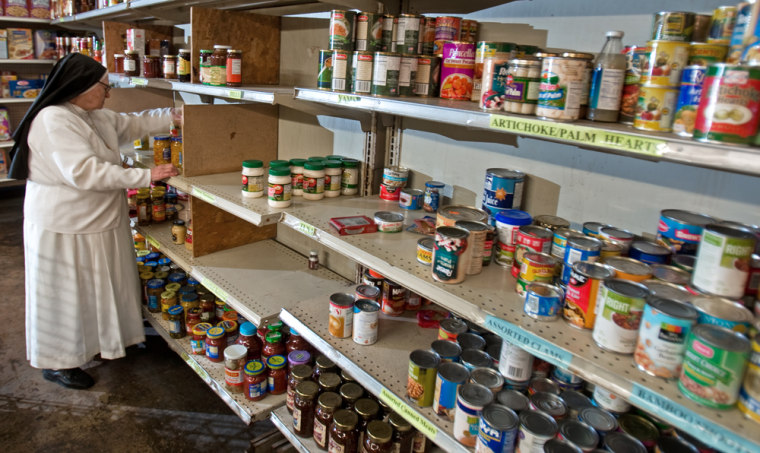The number of Americans who lacked reliable access to sufficient food shot up last year to its highest point since the government began surveying in 1995, the Agriculture Department reported on Monday.
In its annual report on hunger, the department said that 17 million American households, or 14.6 percent of the total, “had difficulty putting enough food on the table at times during the year.” That was an increase from 13 million households, or 11.1 percent, the previous year.
The results provided a more human sense of the costs of a recession that has officially ended but continues to take a daily toll on households; it describes the plight not of a faceless General Motors or A.I.G. but of families with too little food on their children’s plates.
Indeed, while children are usually shielded from the worst effects of deprivation, many more were affected last year than the year before. The number of households in which both adults and children experienced “very low food security” rose by more than half, to 506,000 in 2008 from 323,000 in 2007, .
Overall, one-third of all the families that are affected by hunger, or 6.7 million households, were classified as having very low food security, meaning that members of the household had too little to eat or saw their eating habits disrupted during 2008. That was 2 million households more than in 2007.
In a statement, Agriculture Secretary Tom Vilsack emphasized the administration’s efforts to combat hunger by creating jobs, providing job training, extending unemployment benefits and taking other measures. He called hunger “a problem that the American sense of fairness should not tolerate and American ingenuity can overcome.”
During his campaign, President Obama promised to eliminate hunger among American children by 2015. The administration has yet to offer a detailed plan to do so, and the report on Monday underscored the daunting dimensions of the challenge.
Problem understated?
Vicki Escarra, president of Feeding America, a nonprofit organization with a national network of more than 200 food banks, said that the Agriculture Department probably understated the problem. With unemployment and other economic indicators continuing to worsen in 2009, she said, “there are likely many more people struggling with hunger than this report states.”
In September, the group found a sharp increase in requests for emergency food assistance; the food banks in its network reported an average increase in need of nearly 30 percent this year over 2008.
“National socioeconomic indicators, including the escalating unemployment rate and the number of working poor, lead us to believe that the number of people facing hunger will continue to rise significantly over the coming year,” added Ms. Escarra.
The Agriculture Department report was issued as a World Summit on Food Security was opening in Rome.
Jacques Diouf, director general of the United Nations Food and Agriculture Organization, has urged governments to invest $44 billion a year to end chronic hunger afflicting an estimated 1 billion people.
But as Bloomberg News reported, a draft of the session’s final declaration includes promises of reinforced government efforts to sharply reduce world hunger but makes no mention of new financial commitments.
This story, "Hunger in U.S. at a 14-Year High," originally appeared in The New York Times.
